Rare Rides Icons: The History of Imperial, More Than Just a Car (Part XXII)
Today we reach the 22nd and final installment in the Imperial series. In our last edition, we reviewed the development and birth of the final production car to wear the Imperial name: The super-extended K-car platform known as the Y-body. Lee Iacocca was keen on the idea of a full-size luxury sedan for the elderly customer, but Chrysler had neither the resources nor the platform to do it properly. Thus the Y-body appeared, and its angular and pencil-thin shape went on sale in 1990 alongside the similarly lengthened Chrysler New Yorker Fifth Avenue. Speaking of angles, let’s talk about that sweet money-saving clip swap action.
Rare Rides: The Paul McCartney Signature Edition 2006 Lexus RX 400h, One of One
Today’s Rare Ride was randomly mentioned among some other Lexus discussion on Twitter, and your author knew it immediately needed coverage here. This very special RX was conceived at a time when McCartney and Lexus were particularly chummy and financially interested in one another. Lexus worked up a bespoke special edition car as an homage to the legendary star. And though the resulting homage was even more cringe-inducing than its title might suggest, it was at least created for a good cause. You might say this particular Lexus RoX.
Abandoned History: The Chrysler UltraDrive Transmission (Part I)
The recent Rare Rides Icons post on the 1990 Chrysler Imperial Super-K Gingerbread Cookie Edition generated a few comments not only about the subject in question but its four-speed UltraDrive transmission. It seems more than one of you wants a discussion – no – an essay on the UltraDrive. Wish granted! Here we go.
Rare Rides Icons: The History of Imperial, More Than Just a Car (Part XXI)
We find ourselves at the final two installments of the long-running Imperial series today. It’s been almost six months since the first Imperial entry, when a new model was dreamt up by Chrysler’s founder as competition for the likes of Pierce-Arrow and Studebaker. The Imperial name outlived most of the Twenties competition it was designed to beat, though along the way it drifted both nearer and further to the original mission. The concluding entrant into the Imperial lineage was definitely the weakest ever. K-car time, commence!
Abandoned History: General Motors' Passport and Asna, Total Brand Confusion (Part I)
In the Eighties and Nineties, General Motors of Canada decided to try new distribution strategies for its imported cars. Like in the recent Dodge Colt series, General Motors had its own captive import cars and trucks that were manufactured by other brands. But because of dealership arrangements in Canada, GM took things a step further than Chrysler and established a separate distribution network for its imported wares. The efforts lead to the thrilling Passport and Asüna brands for the Canadian market. First up, Passport.
Abandoned History: Chrysler and the Colt, Captive Economical Import Time (Part VII)
We arrive at the end of our Dodge Colt journey today. Colt started in 1971 as a cooperative program to provide Mitsubishi with a sales outlet in North America, and Chrysler with a compact and fuel-efficient car it didn’t have to design or build. Over the years the Colt evolved with the needs of the consumer and branched out into several different body styles.
Eventually, the tides shifted. Mitsubishi established their own dealerships in the United States (but not Canada) and started selling identical cars as were on Dodge/Plymouth dealer lots. Then, as Eagle came into being it also needed product to sell. Chrysler turned Eagle into its de facto outlet for imports and Mitsubishi cooperative products: Colts of regular and wagon persuasion became Eagles called Vista and Summit, in addition to their Dodge and Plymouth twins.
Last time we left our tale it was the dawn of 1993, and Colts were badged at Eagle dealers as a new generation of Summit. The Vista Wagon name was dead, now called Summit Wagon. Dodge, Plymouth, and Eagle dealers had an exciting new Colt as well! But it didn’t last long.
Rare Rides Icons: The Toyota Cressida Story (Part IV)
We’ve come to the end of our Cressida journey, and the short-lived fourth generation. Conservative and staid as ever, Cressida’s final entry was squeezed out of the lineup from above and below: The crushing weight of Lexus came down upon the late Eighties Cressida shortly after its introduction, while Camry smashed it from below. Put on your Urban Sombrero and let’s go.
Rare Rides: The 1975 Aston Martin Lagonda Series I, One of Seven
The Rare Rides series has covered every generation of Aston Martin’s Lagonda four-door except one. In the Sixties, the Lagonda Rapide helped to define the super sedan class: A grand tourer that could sweep four passengers and their luggage across Continental Europe with ease.
Then there was the late Seventies Lagonda, which had a long production run through 1990. Advanced electronically, that Lagonda was too ambitious and generally earned its reputation as a good-looking, expensive disaster. Finally, there was the Lagonda Taraf, a large sedan designed specifically and cynically for the UAE market. It was built to extract maximum dollars from oil barons and the like. Great success!
But between Lagonda Rapide and Lagonda was a missing link. It was called the Lagonda Series I and is the rarest Aston Martin Lagonda ever made. And one is for sale.
Rare Rides Icons: The History of Stutz, Stop and Go Fast (Part VI)
Today we pick up our Stutz series once more, at the dawn of 1929. Stutz wasn’t in the best way at the time: Its vehicles, though very luxurious, were selling slowly, and were largely seen as behind the times with the luxury competition. Management had taken the company’s advertising in a new direction in the second half of the Twenties and was largely ignoring the company’s racing pedigree – the thing that put Stutz on the map.
There was no Bearcat in the company’s lineup, as wares drifted further from performance and more into elegance territory. And finally, given the company’s financial struggle and recent lack of interest in motorsport, the board room discontinued all support for racing activities in 1928. The sole promising source of money was the distribution rights for the Pak-Age-Car, which saw the delivery trucks placed alongside luxury cars in Stutz showrooms. Things went downhill further as the Great Depression loomed.
Rare Rides Icons: The History of Imperial, More Than Just a Car (Part XX)
Here we are, the 20th installment of the Imperial series. We’ve covered the Imperial’s inception as a coach-built car for the wealthy, through its Fifties rebirth as an independent brand with hand-built quality that rivaled the best luxury car makers had to offer. From there Imperial’s tale was ups and downs (mostly downs) as Chrysler’s luxury arm continually found itself less independent, and more tied to the New Yorker.
But after its sad Seventies cancellation, it was time for an Eighties rebirth under the direction of CEO Lee Iacocca. He was determined to make the best, most exclusive American personal luxury coupe money could buy. To date we’ve learned about the angular bustle back exterior, the J-body Cordoba platform underneath, and the Cordoba-plus leather-lined interior, by Mark Cross. Today we continue with Iacocca’s close personal friend, Frank Sinatra (or ‘FS’ if you’re talking badges.)
Abandoned History: The Current Buick Logo, Just One of Many (Part II)
There has been much speculation over the past week regarding General Motors’ trademark application for a new Buick logo. Likely related to a swath of new EVs on the horizon (but not yet confirmed), the news fired up the old Abandoned History thought box. Why not take a look at all of Buick’s past logos? We began yesterday in 1903, and pick up today in 1942.
What Ever Happened to the U.S. People's Convoy?
It’s been a while since we’ve covered the trucking protests and you might be wondering what happened with the U.S. People’s Convoy that emerged from the still-smoldering ashes of the Canadian Freedom Convoy. Well, it’s been circling Washington, D.C. for the last several weeks in the hope it can draw sufficient attention.
Unlike the Canadian-based convoy, which saw the government deploy armed men to clear demonstrations taking place in front of Ottawa’s Parliament Hill, the Americans have remained mobile to avoid getting cornered by authorities. Stationed out of Hagerstown Speedway in Maryland, truckers have established a base of operations where they can service vehicles whenever they’re not on the Beltway protesting. Drone shots from above have indicated that there are usually a few hundred trucks parked at the racetrack each morning, though videos from inside show evening returns including hundreds more supportive passenger vehicles. While journeys into the city do take place, they typically involve a handful of trucks designed to make some noise before quickly retreating to avoid being penned in.
Abandoned History: The Current Buick Logo, Just One of Many (Part I)
According to a recently filed trademark application, Buick’s familiar tri-shield logo may be going the way of the dodo. It’s been suggested the potential logo change is in pursuit of a revised image, in preparation for the Brave New World of EVs that Buick will soon unleash upon millions of eager customers. However, given the company has been around for over 120 years this is far from the first time Buick has swapped its badge.
Abandoned History: Chrysler and the Colt, Captive Economical Import Time (Part VI)
We rejoin the world of the Colt today, specifically the lineup on sale at various Dodge, Plymouth, and now Eagle dealers in the United States and Canada in the early Nineties. The addition of Eagle to Chrysler’s brand portfolio for the 1988 model year had a direct effect on the future of Colt: Almost immediately the Colt sedan was drafted onto the Eagle team, where it became the more expensive Summit.
Remaining as Colts in the US in 1990 were the hatchback and the dated Colt Vista and wagon. Canadians were offered the contemporary Colt sedan and hatchback, while the Colt Vista was sold over the border as the Eagle Vista Wagon. The Vista Wagon was accompanied in Canada by the old Colt sedan from the mid-Eighties, branded as Eagle Vista sedan and offered only as a very basic vehicle. We pick up at the beginning of the 1991 model year.
Please, People: Don't Jump Your Cars for Clicks
I am an optimist by nature. One must be, in order to be a lifelong Chicago sports fan — otherwise, the crushing realization that decades of failure are likely to be followed by a future that consists of more of the same might cause a person to take a one-way stroll into Lake Michigan.
I am trying to retain that optimism even as more and more evidence, both empirical and anecdotal, emerges that social media has warped humanity’s brains beyond recognition. I try to see some value in it — surely your second cousin twice removed would be unaware of your recent Jamaican vacation and how much fun you had YOLO’ing if you didn’t have a Facebook account, right?
Surely your 10 Twitter followers must know your thoughts on how to solve the morass in Ukraine, because you have figured out something that world leaders haven’t, and the world just has to know.
Rare Rides Icons: The Toyota Cressida Story (Part III)
Today we find ourselves in the third installment of Toyota Cressida coverage. The first Cressida bowed in 1978 with curvy European styling influences and was a more luxurious take of the Corona Mark II with which North American consumers were already familiar. After a short run from 1978 through 1980, a second-generation Cressida was introduced for ’81. It pursued a much more traditional three-box sedan shape, and looked quite Japanese despite marketing statements about how it was “European looking.”
Under the conservative shape were a number of whiz-bang electronic features, all applied to an interior that was redesigned solely for the American market Cressida. The second Cressida was more successful than the first, and new tech features like electronic fuel injection made it more desirable. After another short model run from 1981 to 1984, it was time for the third generation Cressida. The new one in 1985 was even more conservatively styled than the two that came before it. Say hello to X70.
Rare Rides Icons: The Mitsubishi Diamante Story (Part IV)
Last time on our Diamante coverage, we learned about the near-luxury sedan’s somewhat delayed introduction to America. In the two-year translation from a Japanese market car to an American one, Diamante lost the majority of its interesting and advanced tech features and adopted a cheaper suspension design. Today we’ll find out what happened when Mitsubishi pitched the new and de-contented Diamante against the Lexus ES 300.
Rare Rides Icons: The Mitsubishi Diamante Story (Part III)
Today is the third installment in our coverage of the Mitsubishi Diamante, the Diamond Star brand’s only luxury offering ever sold in the North American market. Part I introduced us to the Diamante via the Sigma. That fancy hardtop Galant gave way to the Diamante in 1992, based on an extended length Galant platform. The second-generation hardtop sedan and its wagon counterpart were finished for 1995 on dealer lots, though fleet buyers (which fleets though?) had a Diamante available to them in 1996. In 1997, Mitsubishi was back with an all-new Diamante and aimed even higher than it had before.
A Polite Request Regarding Apple CarPlay
I was sitting in line for a car wash this morning, readying a test vehicle for photos, and since the line was long and moving slow, I started perusing Twitter on my iPhone while listening to the radio.
The same phone that was plugged into the Ford Maverick’s USB port so that I could run Apple CarPlay.
Rare Rides Icons: The History of Imperial, More Than Just a Car (Part XIX)
We return to our Imperial series again today, and the third installment on the all-new personal luxury coupe Lee Iacocca launched in 1981 to resurrect the historical Imperial name. Unlike every other Imperial to date, the new one was available only in two-door coupe guise. The new car had the dual mission of bringing luxury car credibility back to Chrysler, and grabbing some high margin luxury coupe sales from GM and in particular, Lincoln and the Continental Mark VI. We’ve covered the exterior and the underpinnings, so today we slide into the interior, which is most definitely not covered in Rich Corinthian Leather.
Opinion: Someone Needs to Teach Joe Manchin How EVs Work
Senator Joe Manchin (D, West Virginia) said something this week that makes me think he needs to sit down with a guide to how electrification in vehicles works.
Opinion: EV Discourse Once Again Lacks Nuance
Electric vehicles have once again become a political football.
As someone who lived through the Chevrolet Volt discourse all those years ago, I’m getting a sense of déjà vu.
Rare Rides Icons: The History of Stutz, Stop and Go Fast (Part V)
We pick up our Stutz coverage again today, in the mid-late Twenties. The company saw its financial situation worsen around the middle of the decade, just as it launched the new Vertical Eight series of cars. More expensive than ever before and more powerful, the new Stutz luxury motorcars weren’t without fault. Though superbly built, they had engineering issues with their hydraulic four-wheel braking system that the company couldn’t seem to sort out.
The brake issues damaged the company’s reputation but didn’t ruin it. And Stutz’s high-performance cars continued in their racing tradition with a second-place finish at LeMans. But Stutz was still losing money and needed to invest in new businesses and technologies to stay afloat. Let’s talk about delivery trucks and faux leather finishes.
Rare Rides Icons: The Mitsubishi Diamante Story (Part II)
In Part I of our Rare Rides Diamante coverage, we talked almost exclusively about our subject’s predecessor, the Sigma. Alternatively called Galant Σ, it was a hardtop luxury version of the standard Galant offered in the US market. It was dated when it arrived, too small, and not differentiated enough from the Galant to warrant its high price. U.S. customers mostly ignored it, and Canadians never knew it existed since they didn’t receive any Mitsubishis until 2002. Headed into the Nineties, Mitsubishi had no upscale sedan offering at all in North America, as the Galant was the firm’s largest car. That changed in 1992 with the arrival of the all-new Diamante.
Gas War: EPA Reinstates California's Ability to Set Emission Limits, EV Mandates
The U.S. Environmental Protection Agency has opted to reinstate California’s ability to set tailpipe rules and zero-emission vehicle mandates that are more rigid than federal standards. After quarreling for years over the Trump administration’s decision to roll back Obama-era fueling standards deemed untenable, the Golden State now has the ability to once again make harder for its citizens by forcing them to purchase the kind of vehicles it feels they should be driving — rather than leaving it up to the individual that’s actually buying the car.
Though it might not matter at this point. While California effectively served as a defensive shield against proposed fueling rollbacks while Trump was in office, the Biden administration strategy is broadly in line with its agenda of making gasoline unappetizing to consumers to ensure a speedy transition to electric vehicles. California doesn’t even want people to have access to gas-powered lawn care equipment. The state has effectively served as a test case for Build Back Better since before the phrase passed through the lips of a single politician.
2022's Top 5 Future ICE Age Classics (Plus 1 Bonus Pick)
Just about every automaker has committed itself to going “all-electric” at some point in the next decade, and whether you think that’s a good thing or a bad thing, it means that the internal combustion engine (“ICE”, for the purposes of this article) is dead tech walking. Death and discontinuation are usually one-way tickets to the scrap heap for cars – but some cars are different. Some cars are special, and being made rare or obsolete just makes them more appealing.
The Great Jack Baruth once called this The Grand National Problem, and I think there are a few ICE cars out there that will be more appealing to car guys and gals than others in 20- or 30-years’ time. As such, I’ve taken some time to look at the automotive class of 2022 and pick my 5 future ICE Age Classics. Enjoy!
Rare Rides Icons: The Toyota Cressida Story (Part II)
In Part I of this series we were introduced to Toyota’s Cressida, aka Mark II in almost every other market. A “new” model for the North American market, Cressida picked up where the Corona Mark II left off. The main reason behind the branding change was that Cressida had greater upmarket intentions than the Mark II. When it arrived for 1978 in North America, Cressida wore entirely different styling to its predecessor: Upright, formal shapes replaced the faster-looking curves of the Mark II. The conservative mid-sizer wore a Euro-inspired visage with many Jaguar cues, and the rest of the styling was a mixed bag of American and Japanese flavors.
But the first generation was not long for the world, and after just three model years Toyota released an all-new Cressida. This second edition stuck much closer to Toyota’s typical three-box playbook and added Eighties technology into the bargain. Time for X60.
Abandoned History: Chrysler and the Colt, Captive Economical Import Time (Part V)
When we last left off in the tale of Dodge, Plymouth, and Eagle’s various Colt branding adventures, it was the late Eighties. After a wave of modernization in 1984-1985 where the first Colt sedan appeared and the range extended into the larger and very forward-thinking Colt Vista, Mitsubishi got in on the Colt action and sold a hatchback with its OEM diamond star up front and Mirage lettering on the back. As the Nineties approached, it was time for a new generation of Colts, and more options from a hot new brand: Eagle.
Alright, Let's Talk About Fuel Prices and How We Got Here
Fuel prices have, like most other things, become totally ridiculous. In the United States, the average rate for a gallon of gasoline has eclipsed $4.00 for the first time in a decade. Though what’s probably the most alarming is how quickly it happened. Plenty of Americans could still find fuel for under $2.00 a gallon in April of 2020, meaning we’ve seen prices effectively double within two years in the United States. Meanwhile, European nations more accustomed to lofty fuel bills have been sounding the warning bells (especially in regard to diesel) for months.
Despite the issue existing long before Russia invaded Ukraine, the war has become the de facto explanation among politicians for why you had to swap to less-fancy dog food and off-brand soda to keep the truck gassed up. This is also influencing the government’s response to how to handle the present fuel crisis, which looks as if it’ll be getting worse before it gets better. But let’s take a look at how we got here before we dive into what’s being done (or not done) about it.
Rare Rides Icons: The History of Imperial, More Than Just a Car (Part XVIII)
In our most recent installment of our long-running Imperial coverage, the Eighties dawned with a resurrection of the Imperial name and the debut of an exciting new personal luxury coupe. Chrysler’s new chairman Lee Iacocca was determined to recreate the runaway success he’d had at Ford with the Lincoln Continental Mark III. But that meant a simultaneous ask that luxury coupe buyers ignore the very recent financial troubles that plagued the Detroit automaker. And while the exterior of the new Imperial coupe was all bustleback and new angles, its platform and mechanicals were not quite as exciting. Let’s talk about Mirada, Cordoba, and the reliability benefits of electronic fuel injection.
Rivian Rolls Back Price Increase After Making Everyone Angry
On Tuesday, Rivian announced it would be increasing vehicle pricing by roughly 20 percent to account for higher inflationary pressures and higher component costs. It’s not the first electric vehicle startup to do so, or even the first automotive business that realized the hectic economic situation has created a window for expanding profit margins. But it was one of the few to get slapped in the face, metaphorically, after trying to get away with it.
Shares of the company began plummeting almost immediately as it endured widespread criticism, then people started canceling reservations. The plan would have made the $67,500 Rivian R1T electric pickup an $80,000 vehicle, while Rivian would have tacked on an additional $10,000 to the R1S SUV for a new ballpark total of $85,000. This included preorders, which would help to explain why everyone went bananas. But that particular aspect of the plan has been abandoned in an effort to save face and money.
Rare Rides Icons: The History of Stutz, Stop and Go Fast (Part IV)
Stutz Motor Cars was subject to multiple successive changes in both fortune and direction early in its existence. Founded in 1911 based on racing success at the inaugural Indianapolis 500, by the middle of the decade Stutz had its IPO on the New York Stock Exchange. While the company’s sales increased, by the end of the decade it was without its founder and embroiled in a stock cornering scandal. Though it was delisted from the NYSE circa 1921, Stutz kept on selling the luxury cars for which it had become known. We pick up in 1926, as Stutz hit a sales high but was on the precipice of a big tumble.
These Are the Worst Used Cars You Can Buy With Your Tax Refund
It’s that time of year again, when many of you will file your taxes and get back a bunch of money. Some more than others, of course, and probably not enough to buy the sort of car you probably want, but could it be enough for a down payment? That sounds about right – and, if you’re anything like me, you’re about to make a very bad decision.
Why are you making a bad decision? Because you’ve said the words, “ Why would I buy a new Accord when I could get a used [insert German sports sedan] for the same money?” out loud, and sort of believed it. If only a little.
Or, I dunno. Maybe you’re smart. If you are, sit back, get set for some Schadenfreude, check out some of the ridiculous cars we dumb people will be spending our tax money on/ruining our lives with once the H&R Block check hits.
Rare Rides Icons: The Mitsubishi Diamante Story (Part I)
Rare Rides Icons has featured much Japanese sedan content lately, including the mid-Eighties sedan mainstays and most recently a series on the luxurious and conservative Toyota Cressida. However, there’s a mainstream Japanese brand (or two) yet to be included in our sedan considerations. One of them is Mitsubishi, and today we’ll discuss the only true upmarket product the company ever offered in North America. It’s Diamante time.
Rare Rides Icons: The Toyota Cressida Story (Part I)
Our recent Rare Rides Icons coverage of the main quadrant of mid-Eighties Japanese family sedans ( Camry, Accord, Maxima, 626) brought another sedan to mind. Boxy and conservative, it was an upscale offering at a time when Japanese luxury brands simply did not exist. The sedan in question was popular enough for Nissan to target it directly with their Maxima. Presenting the Toyota Cressida, a comfortable luxury experience.
Rare Rides Icons: The History of Imperial, More Than Just a Car (Part XVII)
In our last Imperial entry, we found the brand’s run came to an end. In production since 1926 and an independent brand since 1955, the Imperial fizzled out to nothing after 1975. Chrysler closed its luxury Imperial division, and the once proud two- and four-door Imperials were stripped of some standard features and rebranded into the Brougham trim of the New Yorker. The Imperial name had come a long way from its beginnings as a super luxurious coach built car for the wealthy, and ended up as a slightly nicer New Yorker with more formal front and rear clips. But 1975 was not the end of the Imperial’s story, as a particular Chrysler CEO had big Imperial aspirations. To get to that point for Imperial, let’s talk about Ford.
Abandoned History: Chrysler and the Colt, Captive Economical Import Time (Part IV)
By the early Eighties Chrysler was deep into its product partnership with Mitsubishi, which in North America was most visible via the mutually beneficial Colt. A lineup of rebadged Mitsubishis, the Colt expanded from its rear-drive beginnings in 1971, morphing into a rear- and front-drive mix by the end of the Seventies. In the earliest part of the Eighties, the line was consolidated into a single front-drive hatchback model. Around the middle of the decade, it was time for a fifth-generation Colt and some more lineup expansion. But this time, Dodge and Plymouth dealers wouldn’t be the only ones selling a Colt.
Rare Rides Icons: The History of Stutz, Stop and Go Fast (Part III)
We pick up the Stutz story once again today, at a turning point in the brand’s history. Though its foundation as Ideal Motor Car Company was only a few years prior in 1911, by 1919 big changes were afoot at the company. Disenchanted that he’d lost control of his company when he sought outside investment capital, Harry C. Stutz departed his own firm in July of that year. He took with him the other remaining founder, Henry Campbell. Control of Stutz Motor Cars fell to its primary investor; the man who’d been running the company since the IPO in 1916: Allan A. Ryan.
Rare Rides Icons: The Second Generation Mazda 626, a GD Car
Today we complete our Rare Rides Icons coverage of the mass market, midsize, mid-Eighties Japanese sedan. We’ve covered the V20 Camry, the CA Accord, and most recently the PU11 Maxima. Now we take a look at the alternative to all those, the Mazda 626.
Abandoned History: General Motors' High Technology Engine, and Other CAFE Foibles (Part IV)
We return to the saga of GM’s High Technology engine today, after taking a diesel detour in our last entry. Concurrent in the High Technology engine’s timeline, the Oldsmobile diesel’s failure was quick, but certainly not painless. It put the majority of American consumers off the idea of a passenger car equipped with a diesel engine. And by the time GM pulled the diesel from its various brand lineups, there was a strategy change over in HT4100 land: Not calling the engine HT anymore.
Rare Rides Icons: The History of Imperial, More Than Just a Car (Part XVI)
We return to the Imperial story once more today, at a worst-ever moment. The year is 1974, and the future is bleak for the large prestige car. The economy is down, fuel prices are up due to a recent oil crisis, and the market’s trend is toward front-drive vehicles and sedans of a smaller size. What was Chrysler to do with its flagship Imperial in that sort of environment? Kill it off, that’s what.
Rare Rides Icons: The Second Generation Nissan Maxima, Approaching 4DSC
The PU11 Nissan Maxima was among the Japanese sedans to experience a complete identity shift in the mid-Eighties. Nissan was rebranding itself from a discount Datsun identity and took Maxima upmarket. Packed with technology and on its way to the 4DSC identity that defined the model, the Maxima deserves a place at the table with the V20 Camry and CA Accord. Let’s get technical.
Abandoned History: Chrysler and the Colt, Captive Economical Import Time (Part III)
After Mitsubishi vehicles made their way to Dodge and Plymouth dealerships as the Colt in 1971, Chrysler expanded the fledgling model’s lineup quickly. Nine years after its introduction, the third generation Colt offerings (two different Mitsubishi models) were being discontinued. Accompanying the old Colts on the lot were all-new ones, though old and new alike were sold as ’79 model year cars. It’s Twin Stick time.
Rare Rides Icons: The History of Stutz, Stop and Go Fast (Part II)
From humble beginnings in the rural farmlands of Ohio to the bustling city that was Indianapolis, Harry Clayton Stutz made his way through a winding career path to found the Ideal Motor Car Company in 1911. Ideal’s first product was the Bearcat, a sporty open-top two-seater that Stutz designed himself in just five weeks. After racing at the inaugural Indianapolis 500, Stutz took his racer and made a couple of minor edits, then put it into passenger car production. However, Stutz was a tinkerer first and foremost, so he began to revise the Bearcat almost immediately.
Opinion: Freedom Convoy Truckers Hurt Their Own Cause
Whether the truckers who’ve shut down parts of Ottawa, Canada and the Ambassador Bridge between Detroit, Michigan and Windsor, Canada, are winning the debate over vaccine mandates or not, I suspect they aren’t winning the hearts and minds of some people they might otherwise be able to convince to support them.
Freedom Convoy Update: Truckers Are Winning
The Freedom Convoy that originated in Canada last month has gained an incredible amount of momentum, garnering loads of support from citizens around the world. Sympathetic protests seem to be erupting everywhere while the original group of truckers remains planted on the streets of Ottawa to demand an end to government mandates. But honking at Parliament Hill for two weeks was only a portion of the convoy’s grand strategy.
Large groups of truckers have broken off to create blockades at meaningful border crossings, gaining control of North America’s already ailing supply lines. The most recent example resulted in the taking of the Ambassador Bridge in Detroit, an essential trade crossing for both the United States and Canada. Truckers have held the bridge for five days and automakers have begun announcing shutdowns due to supply issues. Meanwhile, the Canadian government has begun discussing an end to lockdown measures after failing to stop the protests and other nations appear poised to follow in its footsteps.
2022 Chicago Auto Show: Still Relevant?
As you might be aware, Thursday was the first day of media previews for the 2022 Chicago Auto Show. Both editor Tim and yours truly are in attendance – Tim’s a local, and I really needed a few days away from the day job. I can’t, however, shake the feeling that the entire show is on something resembling life support. Beyond that, I wonder if my impressions of the show are a metaphor for the auto industry in total.
Rare Rides: The 1989 Mazda MX-6, an Enthusiast's Four-wheel Steering Choice
Today’s Rare Ride represents the rarest subset of a vehicle that was for most, an afterthought. A sporty coupe ignored in its day, the MX-6 was by most accounts a handsome car that was fun to drive. Particularly elusive is the MX-6 behind today’s article. It has a manual transmission, is turbocharged, and has four-wheel steering. Could it be any cooler (Chandler voice)? Let’s find out.
Opinion: The New York Times Needs to Get Autonomous Driving Terminology Right
The New York Times often gets unfairly criticized, usually by readers who have their own political biases (right and left), but sometimes the criticism lobbed its way is not only very fair, but accurate.
And when it comes to autonomous driving, the vaunted Times has stepped in it, big time.
Rare Rides Icons: The History of Imperial, More Than Just a Car (Part XV)
We return to the Imperial’s saga once again today, at a very low point for the brand. Though the Fuselage Look of 1969 had propped up Imperial’s sales and generated consumer interest, sales were in decline after the ’69s debut. Chrysler put less and less money into its flagship, as parts sharing increased while options and trims did the opposite. There was a second version of the Fuselage Look for 1972 that showed as longer, lower, and heavier than ever before. And though the new metal buoyed sales slightly, the U.S. car market as a whole saw record sales in 1972 and 1973. 1973 was the last such record year for America, and it coincided with the last Fuselage Imperial. Chrysler had a decision to make about its flagship brand.
Opinion: Nissan Used to Care. Does It Still Care?
Last week, Nissan – as part of the Renault Nissan Mitsubishi Alliance – announced an ambitious plan to invest 23 billion Euros in new products, starting with the all-electric Nissan Ariya crossover and compact Nissan Micra, as well as a commitment to developing a new type of solid-state battery that could rocket the company back to the forefront of the electric car market in a way that it hasn’t been since the original Nissan LEAF went into production all the way back in 2010. It was a bold statement of intent, but one that begs the question: Can Nissan pull it off?
Rare Rides Icons: The CA Honda Accord, It's Continental
Much like the V20 Toyota Camry covered by Rare Rides recently, Honda’s CA generation Accord was a big, important step forward for Honda’s mainstream sedan. Designed for a global market and manufactured in many different countries, the CA Accord put the nameplate on the minds of many a middle-market American consumer. Let’s take a trip back in time, to when cars were still square.
Abandoned History: General Motors' High Technology Engine, and Other CAFE Foibles (Part III)
In today’s edition of Abandoned History, we return once more to the late Seventies engines of General Motors. After the disaster which was the V8-6-4 and the subsequent release of the quite flawed HT4100 V8, we take a sidestep today into diesel. Time for a turn with the cost-cut cast iron Oldsmobile oil burner that accompanied the troubled gasoline engines at GM dealerships across the country.
Opinion: Tesla and Elon Musk Need to Hold Themselves Accountable
Tesla and its boss, Elon Musk, stepped in it again this week.
As we reported the other day, Tesla faced a recall of 54,000 vehicles because the company had programmed its Full-Self Driving software to allow rolling stops.
When the Associated Press’s Tom Krisher wrote a pretty straightforward news story describing the recall, Elon Musk called him a “lobbyist” while replying to a tweet.
Rare Rides Icons: The History of Stutz, Stop and Go Fast (Part I)
AAA Endorses Driver-Monitoring Camera Systems
Despite the automotive industry collectively promising to commence deliveries of self-driving cars in 2019, autonomous vehicles have remained test platforms for technologies that don’t yet seem ready for mass consumption. Public perception of the concept has also endured a few setbacks after several fatalities involving partially autonomous vehicles received national media attention. Today, the relevant technologies have failed to mature as swiftly as indicated and there are a whole host of legal ramifications to contend with.
Selling an automobile that’s marketed as being able to drive itself (even partially) are exposing automakers to a whole new demographic of lawsuits, so they’re desperate to install failsafe measures that places the onus of responsibility back onto the driver. Their current favorite is driver-monitoring cameras, which the American Automobile Association (AAA) likewise believes are probably the best solution. The outlet recently shared the results of a study attempting to determine which driver-engagement systems worked best and decided that in-cabin cameras were the leading choice in a batch of bad options.
Rare Rides Icons: The History of Imperial, More Than Just a Car (Part XIV)
In our last installment of the Imperial saga, we worked through the earliest years of Chrysler’s Fuselage Look era. The Imperial wore its hefty new styling well, even though it shared more parts and even body panels with Chrysler’s lesser New Yorker. Although the new looks were a sales hit in 1969, customers who wanted a Fuselage Imperial bought one immediately. By 1971 things were much grimmer. Imperial was relegated for the first time to a singular trim: LeBaron. A sign of the times, the brand was no longer advertised separately in marketing materials, but alongside Chrysler’s other offerings as “Imperial by Chrysler.” However, for 1972 it was time for a big update, as Chrysler tried to bump up the Imperial’s seriously sagging sales.
Rare Rides Icons: The AMC Matador, Medium, Large, and Personal (Part IV)
We finish up our Rare Rides Icons coverage of the AMC Matador today by spending some time abroad. The Matador maintained a few different passports as it donned new branding and nameplates for its various international adventures. And unlike many domestic cars of the period, AMC saw sales success when its midsize arrived in other markets.
Abandoned History: General Motors' High Technology Engine, and Other CAFE Foibles (Part II)
In our last edition of Abandoned History, we covered the years leading up to the release of the Cadillac High Technology V8. Used almost exclusively in 1981, the disastrous V8-6-4 had a primitive engine management system that could deactivate either two or four cylinders on Cadillac’s traditional V8. And while the idea was sound, the technology and engineering behind it were not. Cadillac was left in a bind and needed a replacement engine immediately. But the engine of choice was not finished, and not ready for primetime. Ladies and gentlemen, welcome the medium-rare HT4100.
Rare Rides: The 1958 Buick Limited Lineup, a Very Expensive Roadmaster
Today’s Rare Ride was a single-year offering at Buick; it came and went in 1958. As General Motors reworked its large car offerings that year in response to styling changes at one of its biggest competitors, it reintroduced a historical nameplate at Buick: Limited.



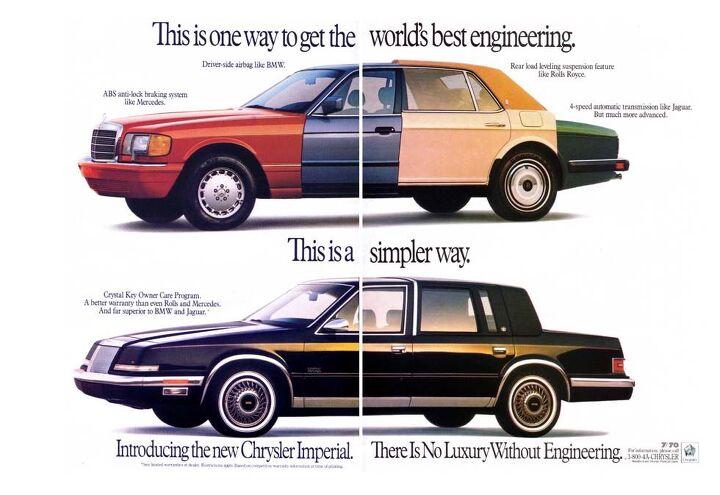
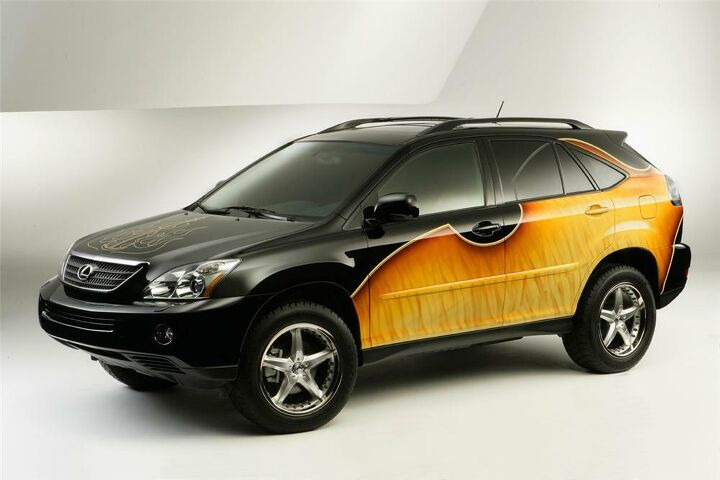
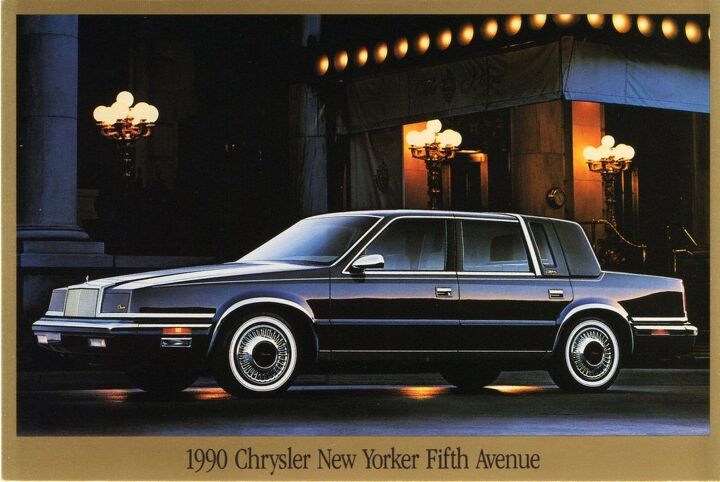
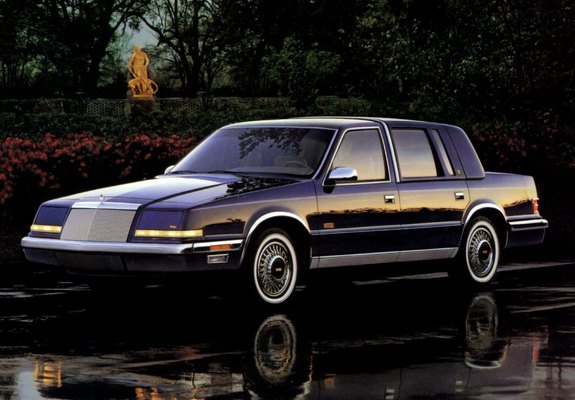
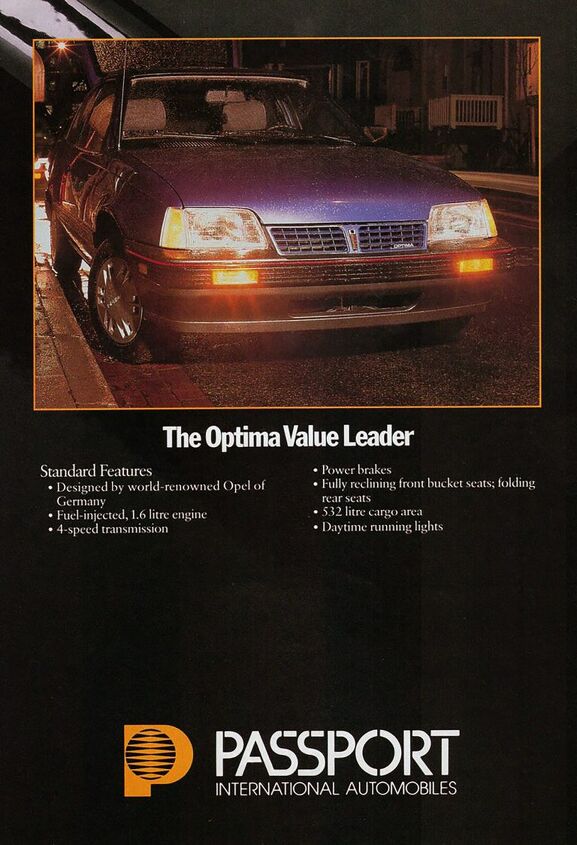

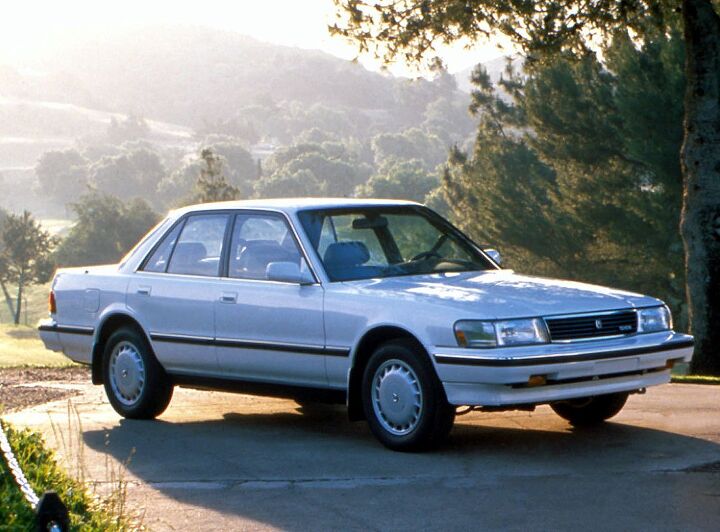
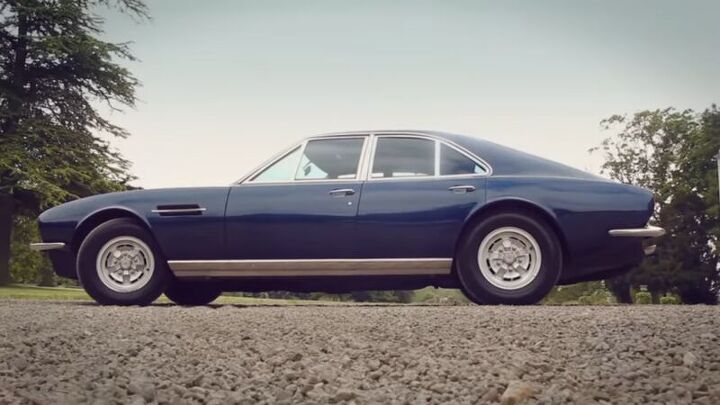
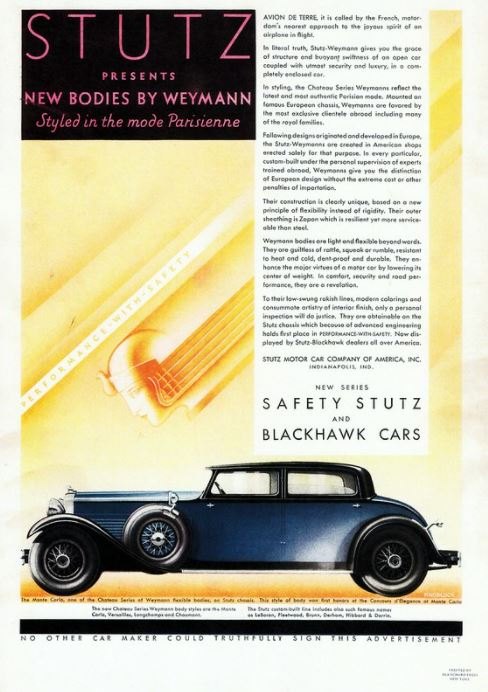
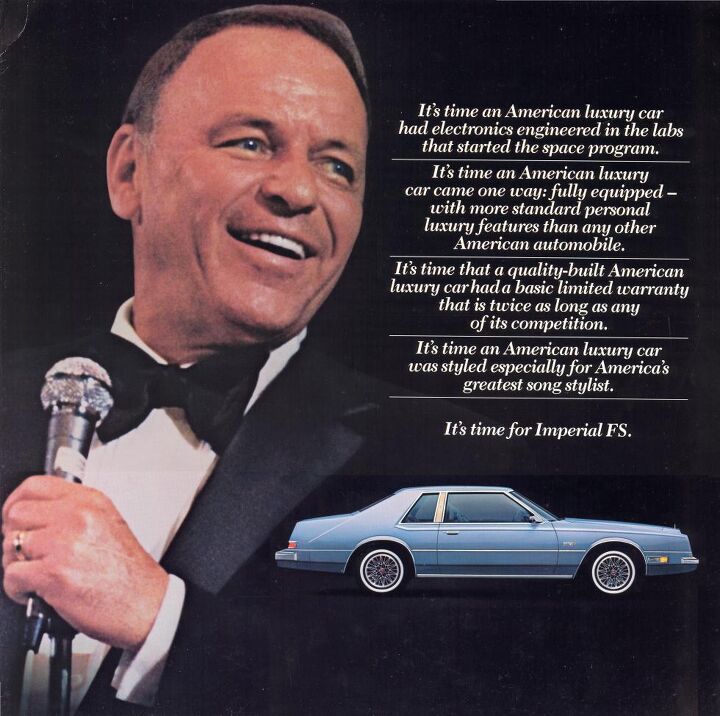
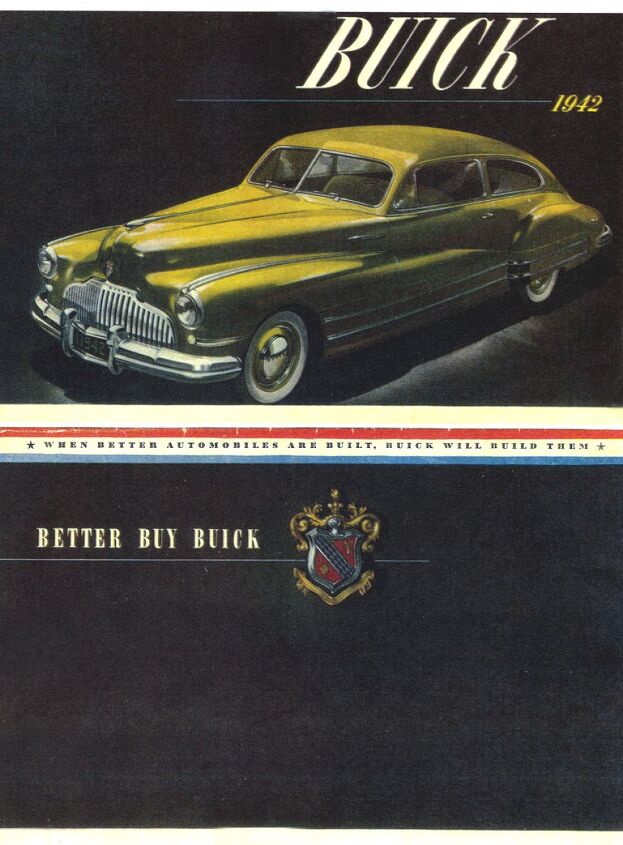

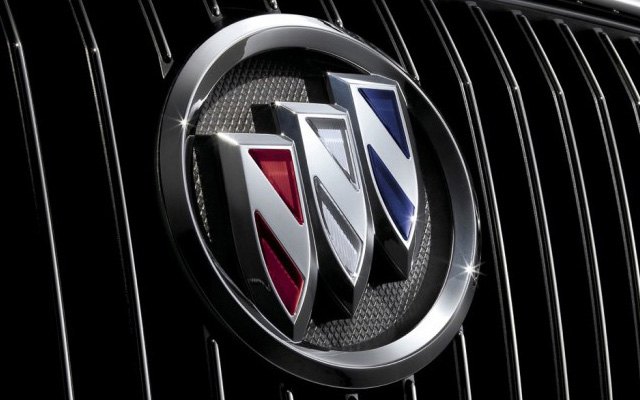
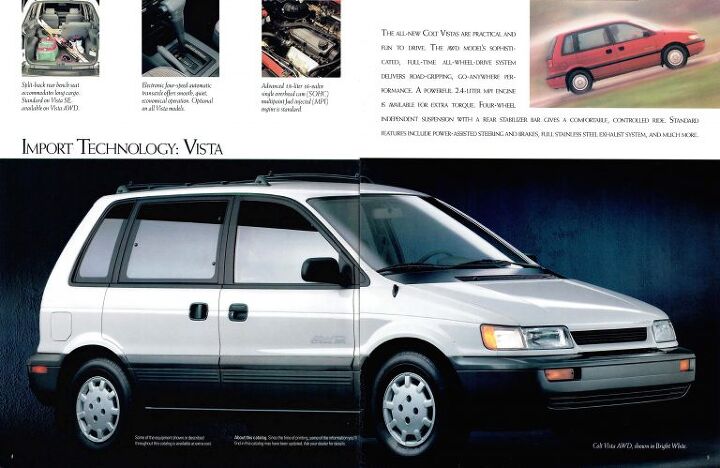
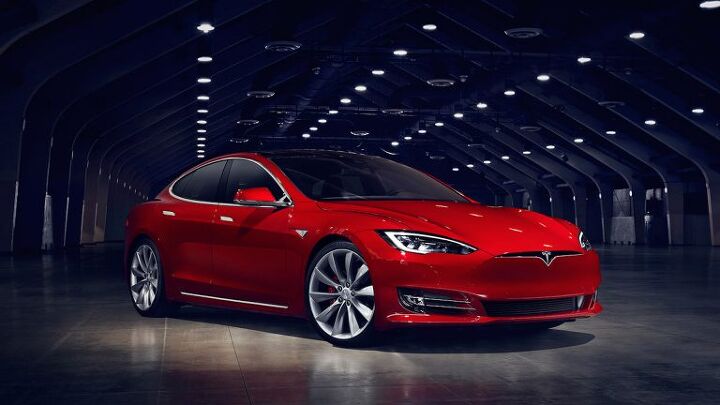
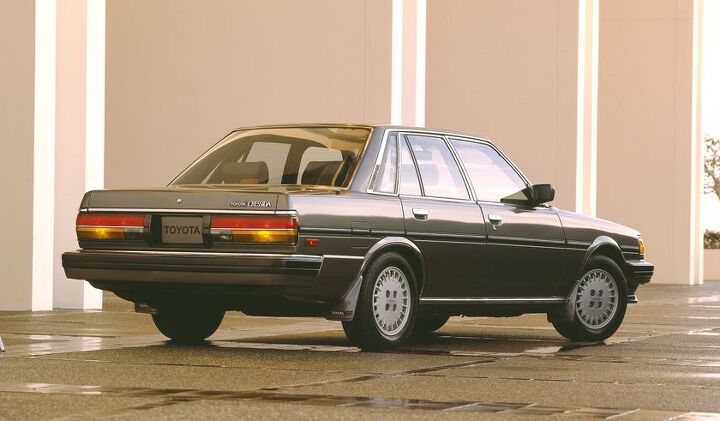
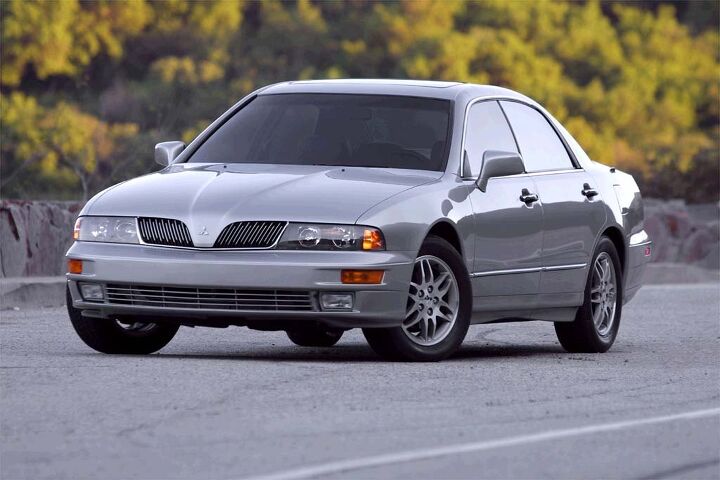
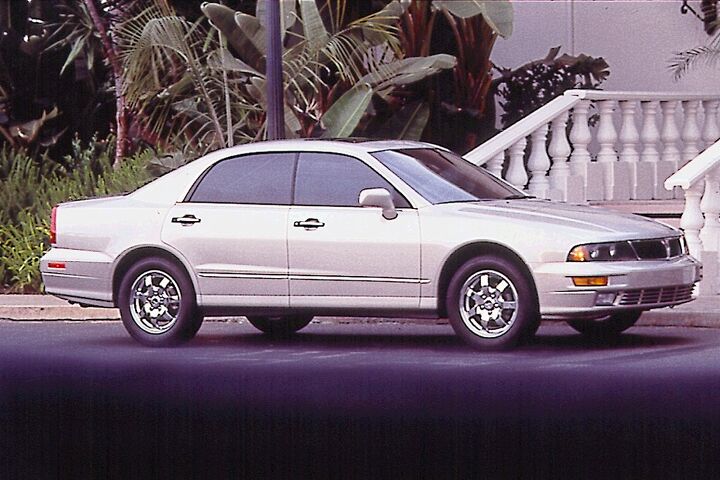

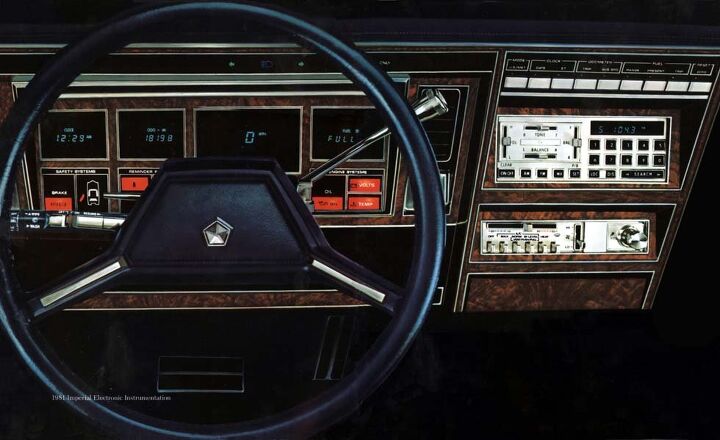



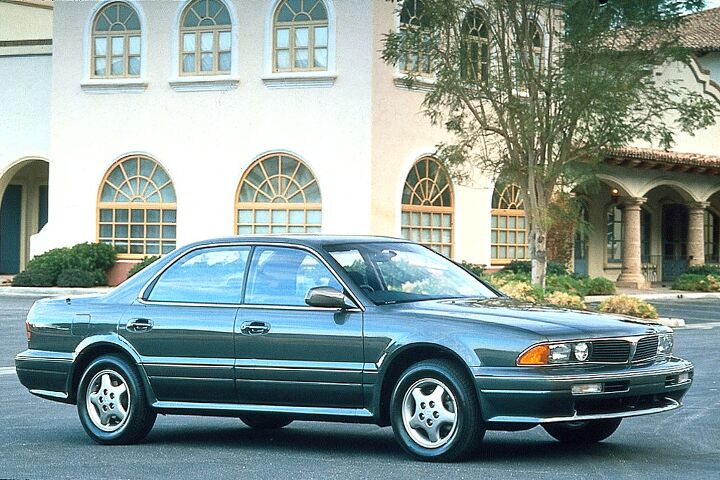

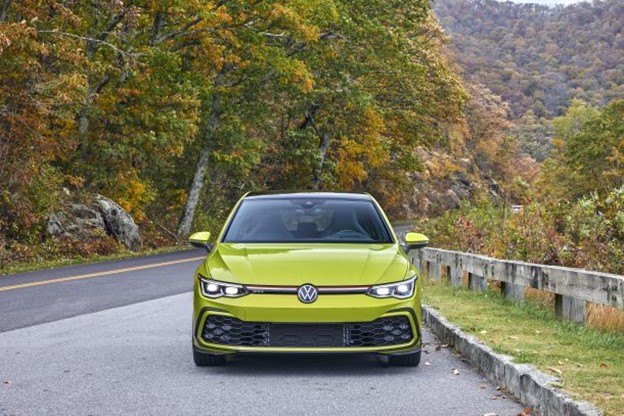
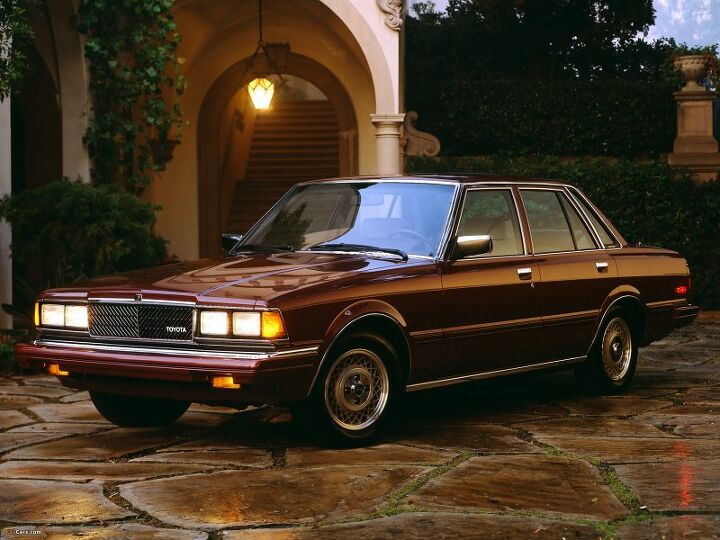
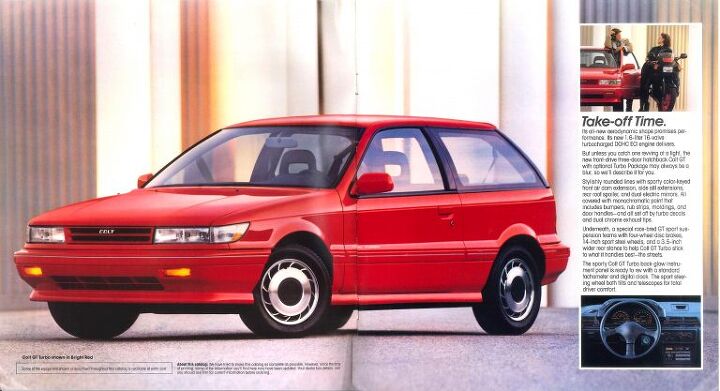



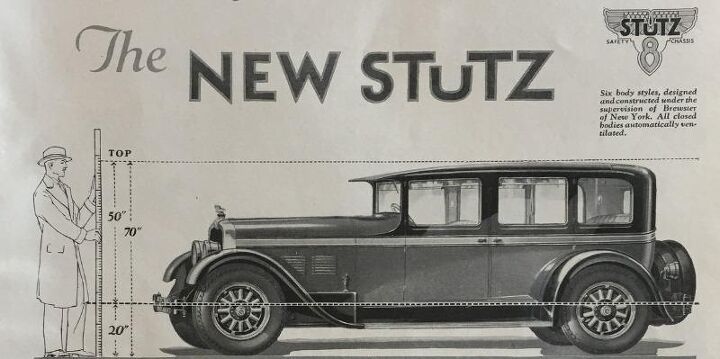

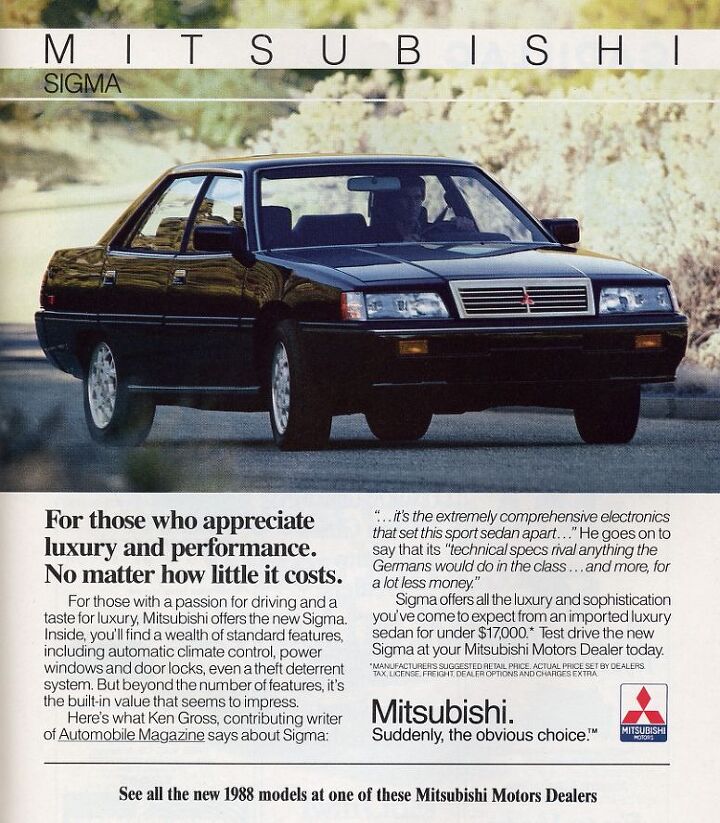
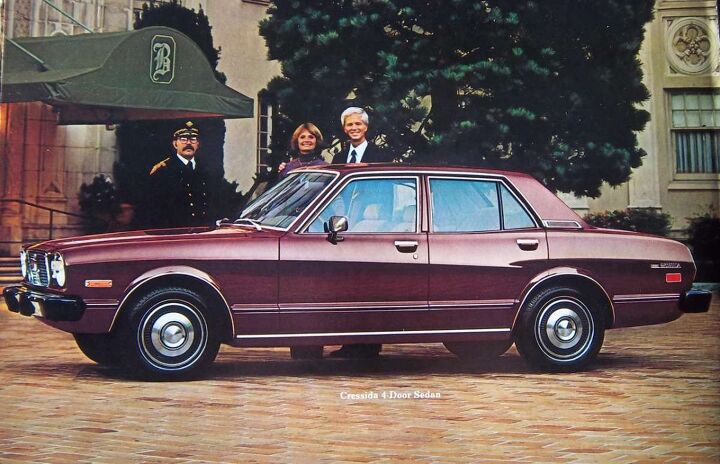
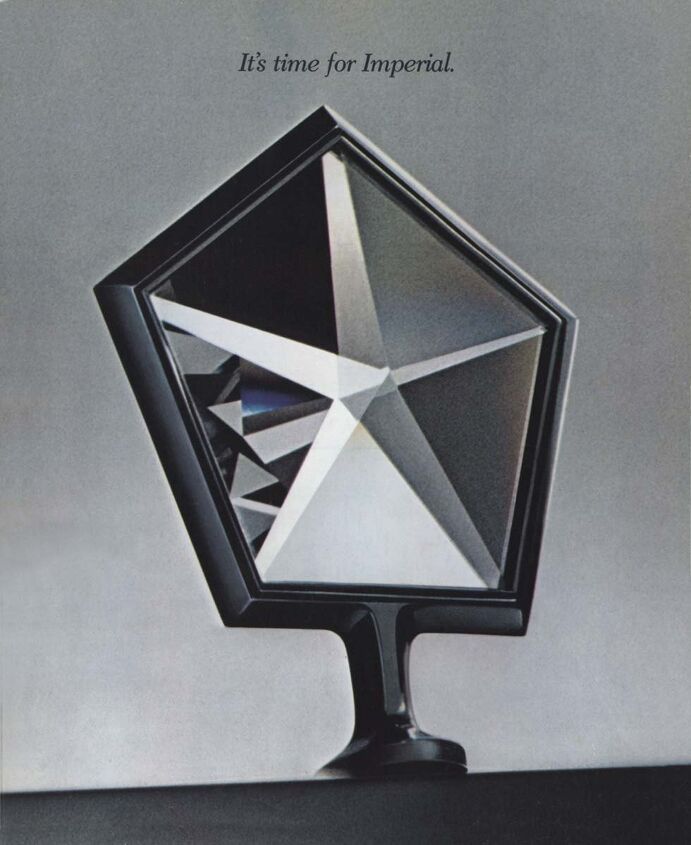
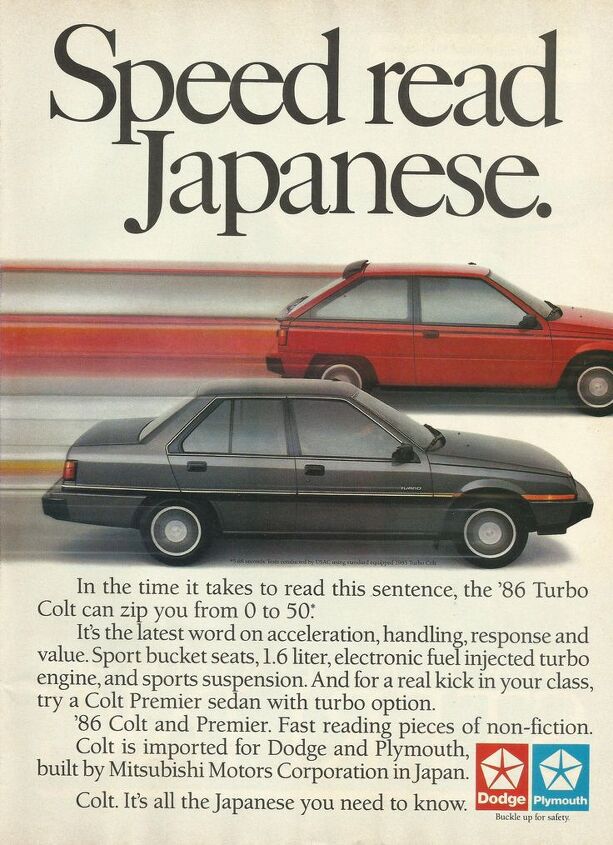
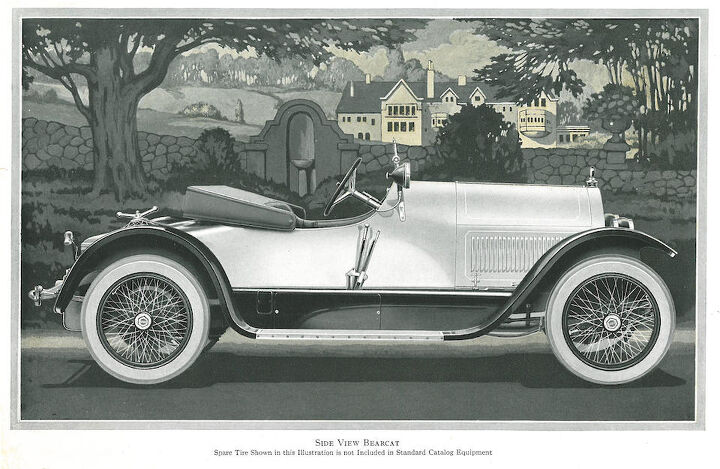
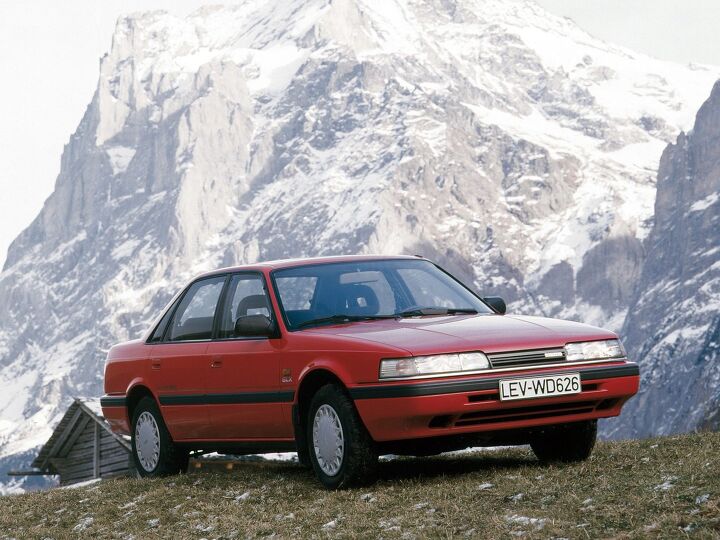
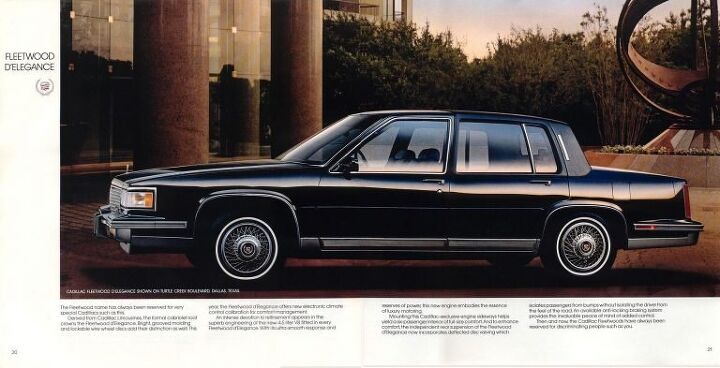
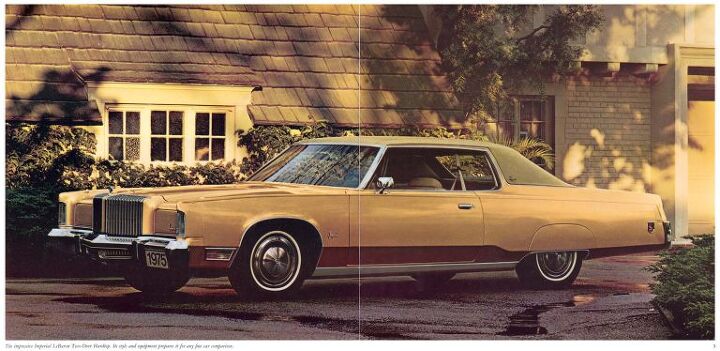
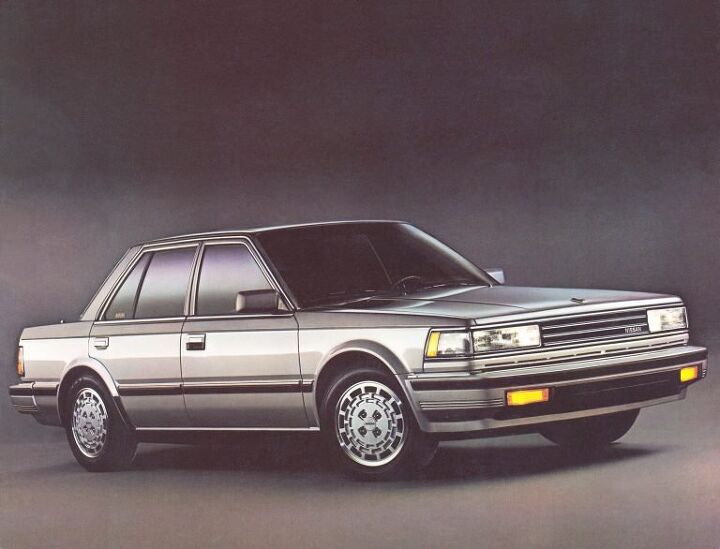
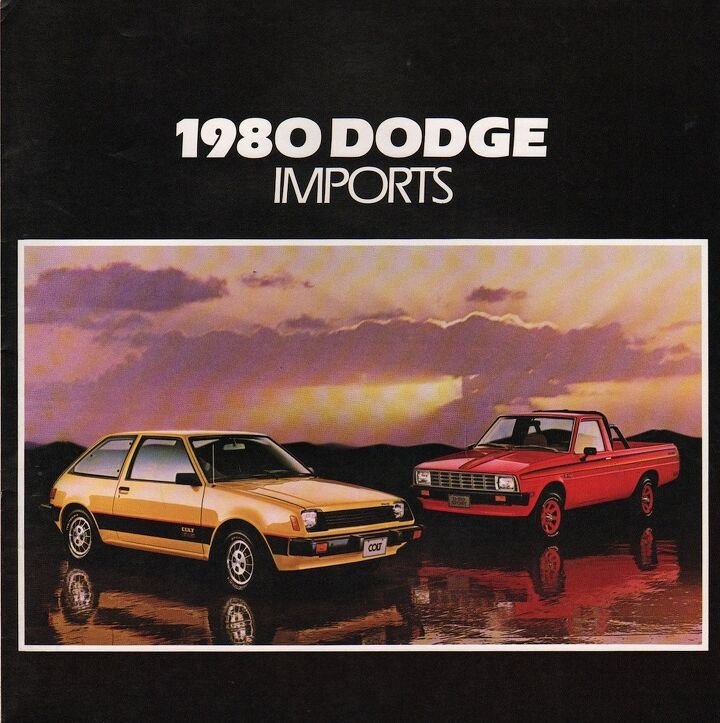
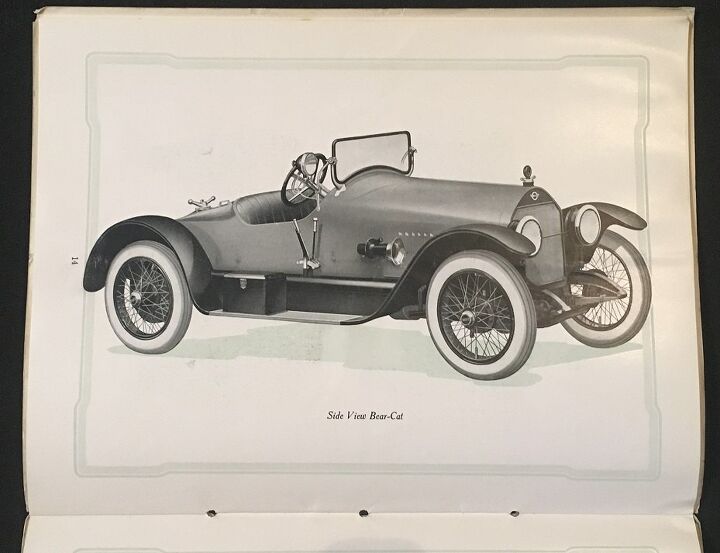



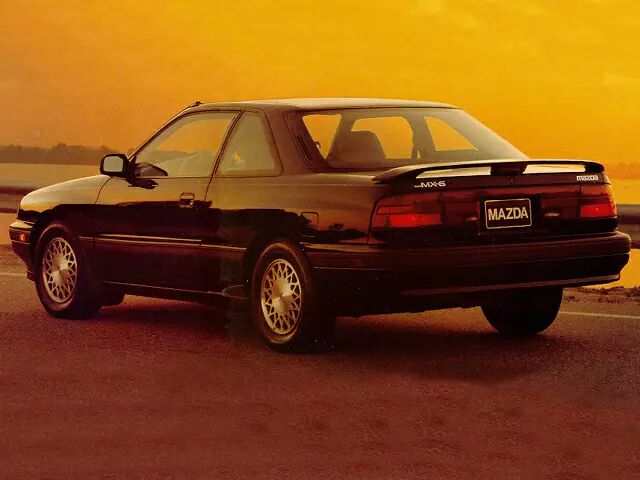
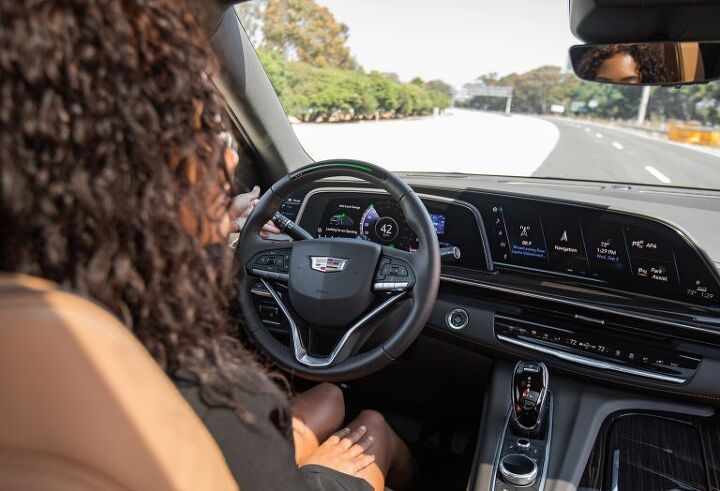
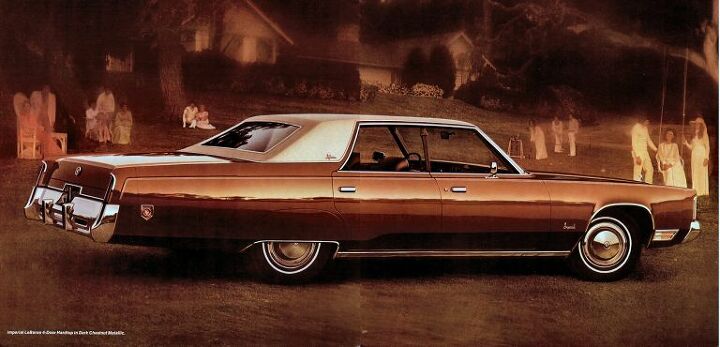
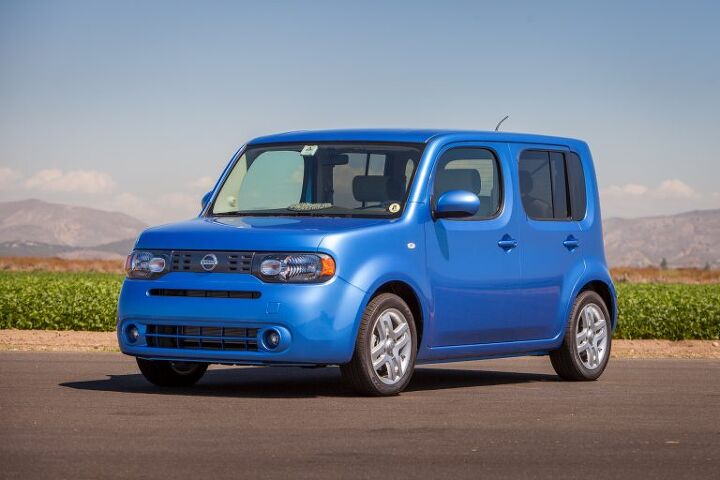
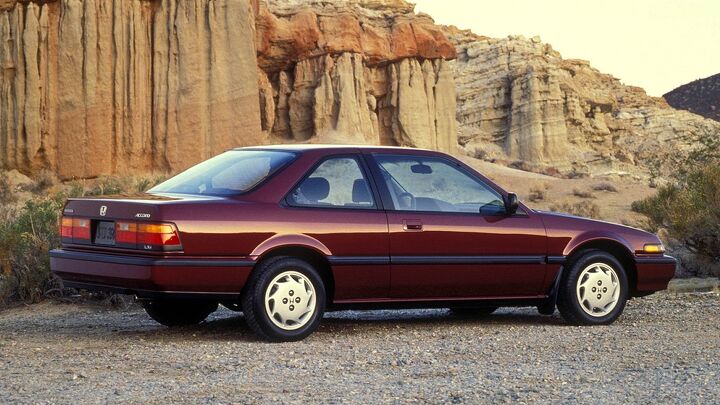


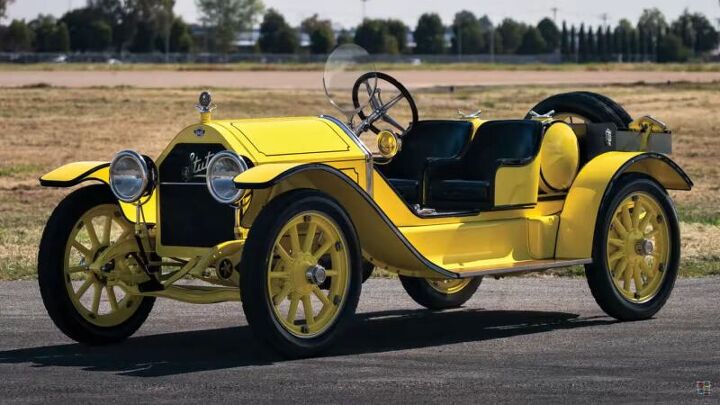
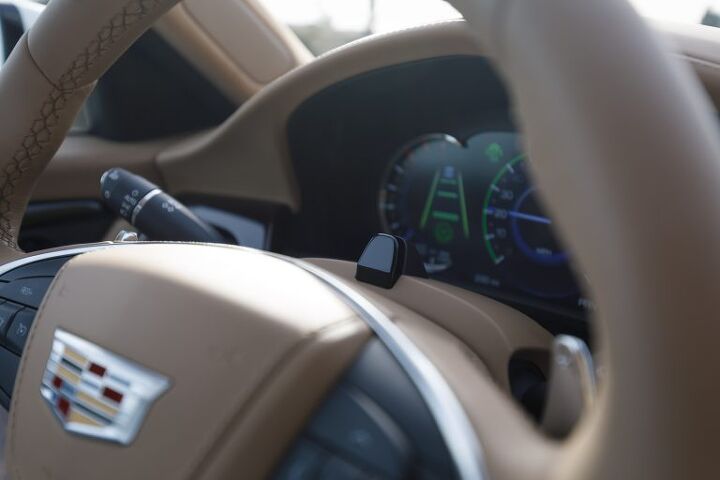
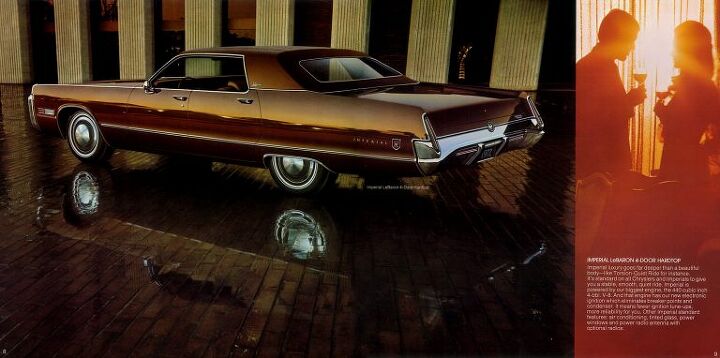
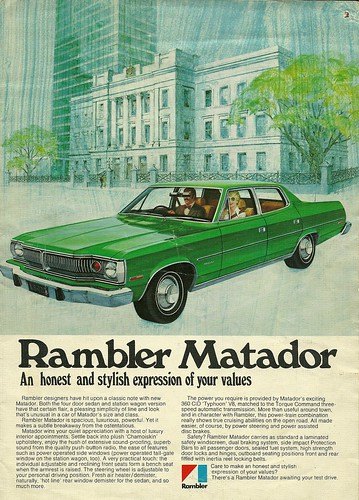

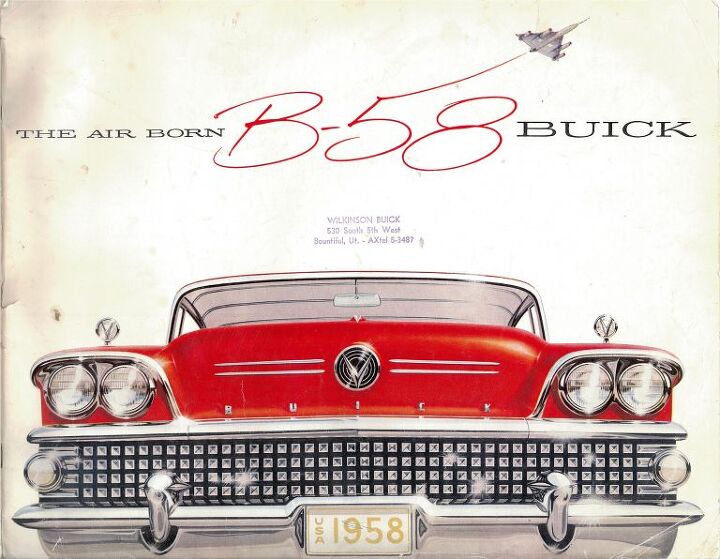












Recent Comments